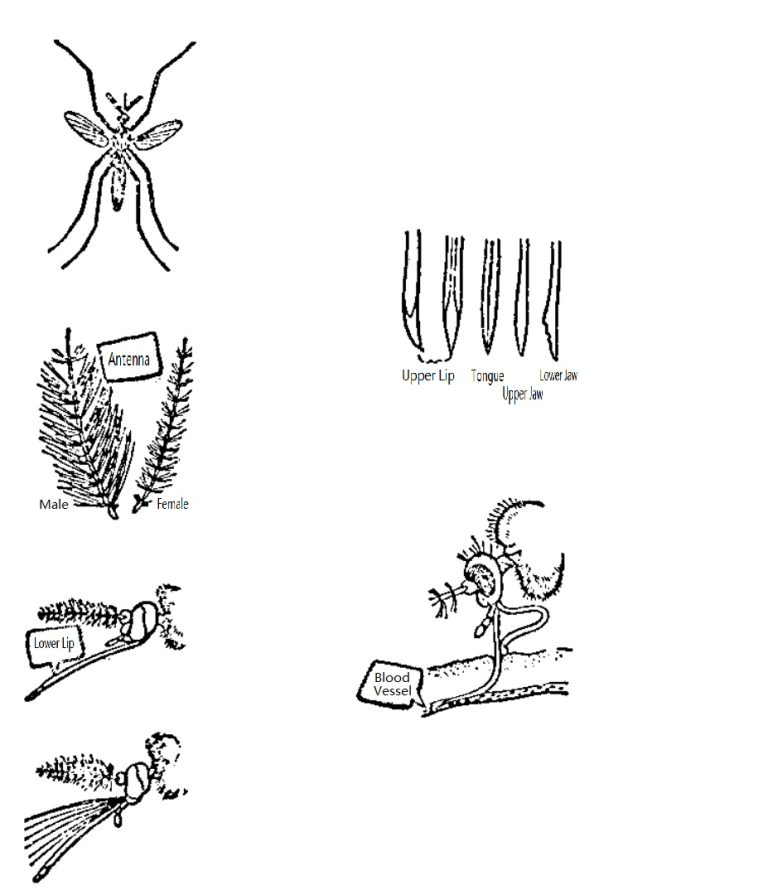In summer, the most annoying thing while trying to stay cool is mosquitoes, which often land on our skin to suck blood. If we kill a blood-sucking mosquito and carefully examine it, we will find that these mosquitoes are all female (you can distinguish between male and female mosquitoes by the shape of their antennae).
Why don’t male mosquitoes suck blood? Let’s first look at the structure of a mosquito’s mouthparts and how they suck blood. A mosquito’s mouthparts are composed of six stylets: the labrum, two mandibles, two maxillae, and the hypopharynx. The ends of the maxillae have serrations. These six stylets are located in a groove of the labium. When a female mosquito sucks blood, the labium bends downward and backward, and its labial palps grasp the stylets. The maxillae first pierce the skin, followed by the other stylets, which extend into the wound and reach the blood vessel to suck blood. The stylets of male mosquitoes are relatively degenerate; their maxillae are short and weak, making them unable to pierce animal skin. Therefore, male mosquitoes generally cannot suck blood. Male mosquitoes get their nutrition from nectar, plant juices, and other fluids, and they live only six to seven days. In addition to the aforementioned sources, female mosquitoes also need to suck animal blood for their eggs to mature. Female mosquitoes can live up to thirty days (active period).

